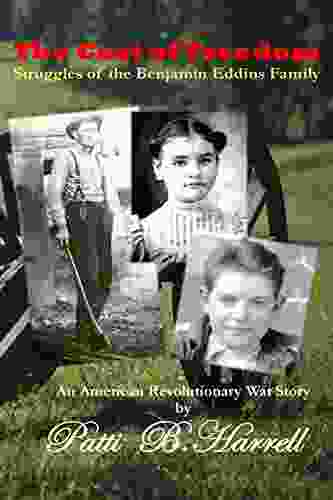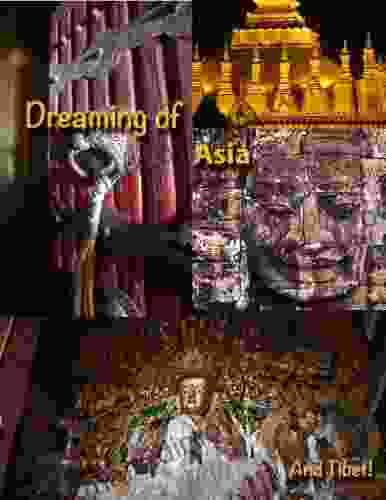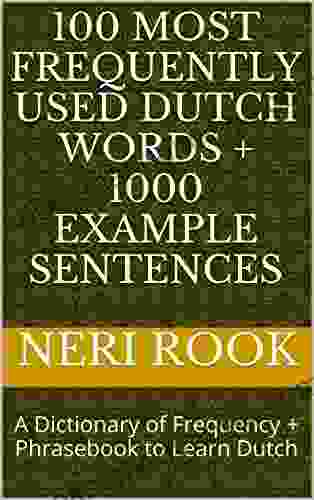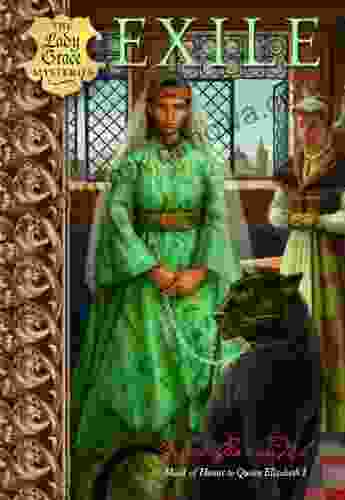American Identities and Children's Consumer Culture: A Critical Analysis

5 out of 5
| Language | : | English |
| File size | : | 14475 KB |
| Text-to-Speech | : | Enabled |
| Enhanced typesetting | : | Enabled |
| Word Wise | : | Enabled |
| Print length | : | 199 pages |
| Screen Reader | : | Supported |
Children are a major target for marketers. In 2020, children in the United States spent an estimated $24 billion on their own Free Downloads, and they influence an additional $250 billion in family spending. This spending is not simply about buying toys and candy. It is also about shaping children's sense of self and their place in society.
The products and marketing messages that children are exposed to can teach them about what it means to be American. They learn about the importance of individualism, competition, and consumption. They also learn about the gender roles and racial stereotypes that are prevalent in our society.
This book provides a critical analysis of the relationship between American identities and children's consumer culture. It explores how children are targeted by marketers and how this shapes their sense of self and their place in society.
Chapter 1: The History of Children's Consumer Culture
The history of children's consumer culture can be traced back to the early 19th century. At this time, children were increasingly seen as a distinct market segment. Marketers began to develop products and marketing campaigns specifically targeted to children.
In the early 20th century, the rise of mass advertising and the development of new technologies, such as radio and television, made it possible for marketers to reach children on a larger scale than ever before. This led to a significant increase in children's consumer spending.
Chapter 2: The Targeting of Children by Marketers
Children are targeted by marketers in a variety of ways. Marketers use advertising, product placement, and social media to reach children. They also use schools and other institutions to promote their products.
Advertising is one of the most common ways that children are targeted by marketers. Children are exposed to thousands of advertisements each year. These advertisements often feature products that are designed to appeal to children's interests and desires.
Product placement is another common way that children are targeted by marketers. Product placement is the practice of placing products in movies, TV shows, and other media. This can help to make children more familiar with products and more likely to want to buy them.
Social media is also a growing way that children are targeted by marketers. Children spend a lot of time on social media, and marketers are increasingly using this platform to reach them. They use social media to promote their products and to create relationships with children.
Chapter 3: The Impact of Children's Consumer Culture on Children's Development
Children's consumer culture has a significant impact on children's development. It can shape their sense of self, their values, and their relationships with others.
Children who are exposed to a lot of marketing may develop a materialistic orientation. They may come to believe that the things they own define them and that they need to buy more things in Free Download to be happy.
Children who are exposed to a lot of marketing may also develop unrealistic expectations. They may come to believe that they can have everything they want and that they deserve to be happy all the time.
Children who are exposed to a lot of marketing may also develop a negative body image. They may come to believe that they are not good enough if they do not have the latest clothes or toys.
Chapter 4: The Role of Parents and Educators in Countering the Negative Effects of Children's Consumer Culture
Parents and educators play a vital role in countering the negative effects of children's consumer culture. They can help children to develop a healthy relationship with money and possessions. They can also help children to understand the importance of critical thinking and media literacy.
Parents can help children to develop a healthy relationship with money by teaching them about budgeting and saving. They can also help children to understand the difference between needs and wants.
Parents can help children to develop critical thinking skills by encouraging them to ask questions about the products and marketing messages they see. They can also help children to understand the difference between fact and opinion.
Educators can play a role in countering the negative effects of children's consumer culture by teaching children about the history of consumerism and the impact it has on society. They can also help children to develop critical thinking skills and media literacy.
Children's consumer culture is a complex and multifaceted issue. It has a significant impact on children's development and on society as a whole. It is important to understand the ways that children are targeted by marketers and the impact that this has on their lives.
Parents and educators play a vital role in countering the negative effects of children's consumer culture. They can help children to develop a healthy relationship with money and possessions. They can also help children to understand the importance of critical thinking and media literacy.
By working together, parents and educators can help children to become more informed and critical consumers.
5 out of 5
| Language | : | English |
| File size | : | 14475 KB |
| Text-to-Speech | : | Enabled |
| Enhanced typesetting | : | Enabled |
| Word Wise | : | Enabled |
| Print length | : | 199 pages |
| Screen Reader | : | Supported |
Do you want to contribute by writing guest posts on this blog?
Please contact us and send us a resume of previous articles that you have written.
 Book
Book Novel
Novel Page
Page Chapter
Chapter Text
Text Story
Story Genre
Genre Reader
Reader Library
Library Paperback
Paperback E-book
E-book Magazine
Magazine Newspaper
Newspaper Paragraph
Paragraph Sentence
Sentence Bookmark
Bookmark Shelf
Shelf Glossary
Glossary Bibliography
Bibliography Foreword
Foreword Preface
Preface Synopsis
Synopsis Annotation
Annotation Footnote
Footnote Manuscript
Manuscript Scroll
Scroll Codex
Codex Tome
Tome Bestseller
Bestseller Classics
Classics Library card
Library card Narrative
Narrative Biography
Biography Autobiography
Autobiography Memoir
Memoir Reference
Reference Encyclopedia
Encyclopedia Hannah Jayne
Hannah Jayne Greg Stahl
Greg Stahl Martin Godio
Martin Godio Harvey Newcomb
Harvey Newcomb Brendan Shea
Brendan Shea Gulu Ezekiel
Gulu Ezekiel Hans Fallada
Hans Fallada Lance Rubin
Lance Rubin Marcia Yudkin
Marcia Yudkin Nancy Blakey
Nancy Blakey Grace Given
Grace Given Grant D Fairley
Grant D Fairley William Boniface
William Boniface Wm Earle Wheeler
Wm Earle Wheeler H Peter Nesvold
H Peter Nesvold New Scientist
New Scientist Graham Williams
Graham Williams Gordon Gilmore
Gordon Gilmore Gracie Graham
Gracie Graham Happy Sapiens
Happy Sapiens
Light bulbAdvertise smarter! Our strategic ad space ensures maximum exposure. Reserve your spot today!

 Christian CarterDelve into a World of Cultural Appreciation and Timeless Charm: "Little Black...
Christian CarterDelve into a World of Cultural Appreciation and Timeless Charm: "Little Black...
 Jerome PowellUnveiling the Enduring Struggles of the Benjamin Eddins Family: A Tale of...
Jerome PowellUnveiling the Enduring Struggles of the Benjamin Eddins Family: A Tale of...
 Salman RushdieUnleash Your Writing Potential: 180 Basic Writing Topics with Sample Essays
Salman RushdieUnleash Your Writing Potential: 180 Basic Writing Topics with Sample Essays Kevin TurnerFollow ·9.4k
Kevin TurnerFollow ·9.4k Craig CarterFollow ·2.1k
Craig CarterFollow ·2.1k Liam WardFollow ·3k
Liam WardFollow ·3k Zachary CoxFollow ·4.9k
Zachary CoxFollow ·4.9k Jaylen MitchellFollow ·16.8k
Jaylen MitchellFollow ·16.8k Jared PowellFollow ·4.4k
Jared PowellFollow ·4.4k Devin RossFollow ·3.2k
Devin RossFollow ·3.2k Philip BellFollow ·8.2k
Philip BellFollow ·8.2k

 Owen Simmons
Owen SimmonsEmbark on an Extraordinary Adventure through Central...
Unveiling the Enigmatic Heart of...

 Samuel Taylor Coleridge
Samuel Taylor ColeridgeUnveiling the Enchanting Tapestry of Italy: A Journey...
Prepare to be captivated...

 Mitch Foster
Mitch FosterTraveling to Asia: Uncover the Enthralling Charms of...
Embark on an...

 Jamison Cox
Jamison CoxEmily's Ride to Courage: An Unforgettable Journey of...
Emily's Ride to...

 Voltaire
VoltaireUnlock the Secrets of Dutch Communication with the...
Embark on an...

 Gary Cox
Gary Cox**From Principles to Practice: A Comprehensive Guide to...
**** In today's globalized world, the...
5 out of 5
| Language | : | English |
| File size | : | 14475 KB |
| Text-to-Speech | : | Enabled |
| Enhanced typesetting | : | Enabled |
| Word Wise | : | Enabled |
| Print length | : | 199 pages |
| Screen Reader | : | Supported |






